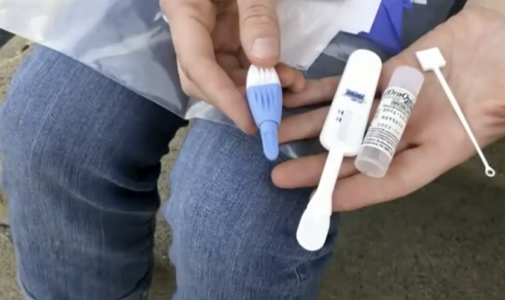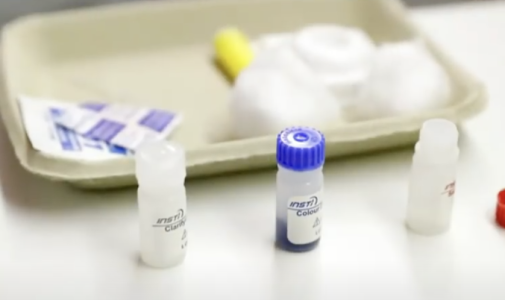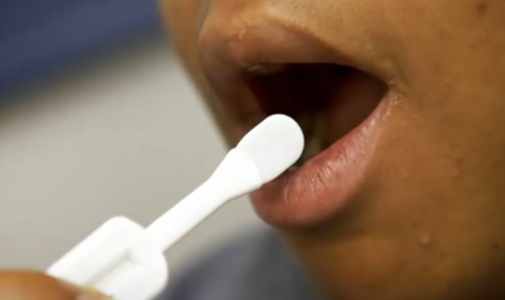Major breakthrough in HIV cure research: “Nothing has come close”
- Replies 0
For decades, the search for an HIV cure has been a story of hope, heartbreak, and relentless scientific pursuit.
Now, a team of Australian researchers may have cracked open a new chapter—one that’s sending shockwaves of excitement through the global medical community.
If you or someone you love has been touched by HIV, this is news worth celebrating—and watching closely.
A Hidden Enemy, Finally Exposed
HIV is a master of disguise. Once it enters the body, it can slip into the DNA of human cells and go into hiding, evading both the immune system and even the most powerful antiviral drugs.
This “stealth mode” is why, despite decades of progress, HIV has remained incurable. Current treatments can suppress the virus to undetectable levels, but they can’t root it out completely.
The result? Lifelong medication and the ever-present risk of resurgence.
But what if we could force HIV out of hiding—making it visible to the body’s natural defenses and modern medicine alike? That’s exactly what researchers at Australia’s Doherty Institute have set out to do, and their latest breakthrough is nothing short of astonishing.

The Science: Nanoparticles and mRNA—A Dynamic Duo
The team’s approach uses cutting-edge mRNA technology—the same platform that powered the rapid development of COVID-19 vaccines.
They’ve engineered tiny nanoparticles capable of delivering genetic instructions directly into infected cells.
Once inside, these instructions prompt the cells to send out a 'flare'—a signal that reveals the presence of hidden HIV.
Dr. Paula Cevaal, a research fellow and co-author of the study, put it plainly: “In the field of HIV cure, we have never seen anything close to as good as what we are seeing, in terms of how well we are able to reveal this virus.” The results were so remarkable that the team had to repeat their experiments to believe them.
Also read: How a 5-year plan could save millions of lives: The future of PEPFAR and its impact on HIV prevention
From Lab Bench to Bedside: What’s Next?
Before you pop the champagne, it’s important to note that these results are still in the early stages.
So far, the technique has only been tested in the lab, using cells donated by people living with HIV. The next steps will involve animal studies, and—if all goes well—eventually human clinical trials. That process could take years, but the momentum is real.
Why does this matter? Because for the 1.2 million Americans living with HIV, and nearly 40 million people worldwide, a true cure would be life-changing.

No more daily pills. No more living with the shadow of a virus that could re-emerge at any time. Just the possibility of freedom.
A Glimmer of Hope Amidst Setbacks
This breakthrough comes at a time when HIV research has faced its share of challenges.
In recent years, funding for some promising vaccine projects has been cut, and the fight against HIV/AIDS has had to compete with other public health priorities.
Yet, the need remains urgent: In the US alone, nearly 32,000 people are newly diagnosed with HIV each year, with gay and bisexual men accounting for the majority of cases.
Also read: Millions of lives at risk: Global HIV progress threatened by alarming budget cuts
Despite these hurdles, the overall trend is positive. New infections in the US have declined by 12% over the past five years, thanks to better prevention, testing, and treatment.
The Power of mRNA: More Than Just a COVID Story
If the term “mRNA” sounds familiar, it’s because it’s been in the headlines since the pandemic began.
But its potential goes far beyond COVID-19. Scientists are now exploring mRNA-based therapies for everything from cancer to rare genetic diseases—and, as this new research shows, for HIV as well.
The beauty of mRNA is its flexibility. By delivering precise genetic instructions, it can teach our cells to make almost any protein—or, in this case, to unmask a hidden virus.

What Does This Mean for You?
If you’re living with HIV, or know someone who is, you might be wondering: “How soon could this become a reality?”
The honest answer is that it will take time. Clinical trials are rigorous for a reason—they ensure that new treatments are both safe and effective.
But the fact that we’re even talking about a potential cure, rather than just lifelong management, is a testament to how far science has come.
In the meantime, the best tools we have are still prevention, regular testing, and adherence to current treatment regimens. Today’s antiretroviral therapies are highly effective at keeping HIV in check and allowing people to live long, healthy lives.
Related story: Game-changing cancer breakthrough—is this the cure we've been waiting for?

Have you or someone you care about been affected by HIV? What are your hopes for the future of treatment and research? Do you have questions about how mRNA technology works, or what this breakthrough could mean for other diseases? Share your stories, questions, and thoughts in the comments below!
Now, a team of Australian researchers may have cracked open a new chapter—one that’s sending shockwaves of excitement through the global medical community.
If you or someone you love has been touched by HIV, this is news worth celebrating—and watching closely.
A Hidden Enemy, Finally Exposed
HIV is a master of disguise. Once it enters the body, it can slip into the DNA of human cells and go into hiding, evading both the immune system and even the most powerful antiviral drugs.
This “stealth mode” is why, despite decades of progress, HIV has remained incurable. Current treatments can suppress the virus to undetectable levels, but they can’t root it out completely.
The result? Lifelong medication and the ever-present risk of resurgence.
But what if we could force HIV out of hiding—making it visible to the body’s natural defenses and modern medicine alike? That’s exactly what researchers at Australia’s Doherty Institute have set out to do, and their latest breakthrough is nothing short of astonishing.

Australian researchers have developed a new nanoparticle treatment that exposes hidden HIV within infected cells, making it detectable to the immune system. Image source: ABC News / Youtube.
The Science: Nanoparticles and mRNA—A Dynamic Duo
The team’s approach uses cutting-edge mRNA technology—the same platform that powered the rapid development of COVID-19 vaccines.
They’ve engineered tiny nanoparticles capable of delivering genetic instructions directly into infected cells.
Once inside, these instructions prompt the cells to send out a 'flare'—a signal that reveals the presence of hidden HIV.
Dr. Paula Cevaal, a research fellow and co-author of the study, put it plainly: “In the field of HIV cure, we have never seen anything close to as good as what we are seeing, in terms of how well we are able to reveal this virus.” The results were so remarkable that the team had to repeat their experiments to believe them.
Also read: How a 5-year plan could save millions of lives: The future of PEPFAR and its impact on HIV prevention
From Lab Bench to Bedside: What’s Next?
Before you pop the champagne, it’s important to note that these results are still in the early stages.
So far, the technique has only been tested in the lab, using cells donated by people living with HIV. The next steps will involve animal studies, and—if all goes well—eventually human clinical trials. That process could take years, but the momentum is real.
Why does this matter? Because for the 1.2 million Americans living with HIV, and nearly 40 million people worldwide, a true cure would be life-changing.

The breakthrough uses mRNA technology, similar to that used in Covid vaccines, to deliver genetic instructions that reveal HIV's presence only when the virus is actually there. Image source: ABC News / Youtube.
No more daily pills. No more living with the shadow of a virus that could re-emerge at any time. Just the possibility of freedom.
A Glimmer of Hope Amidst Setbacks
This breakthrough comes at a time when HIV research has faced its share of challenges.
In recent years, funding for some promising vaccine projects has been cut, and the fight against HIV/AIDS has had to compete with other public health priorities.
Yet, the need remains urgent: In the US alone, nearly 32,000 people are newly diagnosed with HIV each year, with gay and bisexual men accounting for the majority of cases.
Also read: Millions of lives at risk: Global HIV progress threatened by alarming budget cuts
Despite these hurdles, the overall trend is positive. New infections in the US have declined by 12% over the past five years, thanks to better prevention, testing, and treatment.
The Power of mRNA: More Than Just a COVID Story
If the term “mRNA” sounds familiar, it’s because it’s been in the headlines since the pandemic began.
But its potential goes far beyond COVID-19. Scientists are now exploring mRNA-based therapies for everything from cancer to rare genetic diseases—and, as this new research shows, for HIV as well.
The beauty of mRNA is its flexibility. By delivering precise genetic instructions, it can teach our cells to make almost any protein—or, in this case, to unmask a hidden virus.

Experts describe the results as unprecedented in HIV cure research, noting that while rigorous testing and years of work remain, it’s a major step towards a potential cure for millions living with HIV worldwide. Image source: ABC News / Youtube.
What Does This Mean for You?
If you’re living with HIV, or know someone who is, you might be wondering: “How soon could this become a reality?”
The honest answer is that it will take time. Clinical trials are rigorous for a reason—they ensure that new treatments are both safe and effective.
But the fact that we’re even talking about a potential cure, rather than just lifelong management, is a testament to how far science has come.
In the meantime, the best tools we have are still prevention, regular testing, and adherence to current treatment regimens. Today’s antiretroviral therapies are highly effective at keeping HIV in check and allowing people to live long, healthy lives.
Related story: Game-changing cancer breakthrough—is this the cure we've been waiting for?
Key Takeaways
- Australian researchers have developed a new nanoparticle treatment that exposes hidden HIV within infected cells, making it detectable to the immune system.
- The breakthrough uses mRNA technology, similar to that used in Covid vaccines, to deliver genetic instructions that reveal HIV's presence only when the virus is actually there.
- So far, the research has only been conducted in the laboratory using cells from HIV patients, and further studies—including animal trials and clinical testing—are still needed before it reaches humans.
- Experts describe the results as unprecedented in HIV cure research, noting that while rigorous testing and years of work remain, it’s a major step towards a potential cure for millions living with HIV worldwide.
Have you or someone you care about been affected by HIV? What are your hopes for the future of treatment and research? Do you have questions about how mRNA technology works, or what this breakthrough could mean for other diseases? Share your stories, questions, and thoughts in the comments below!






